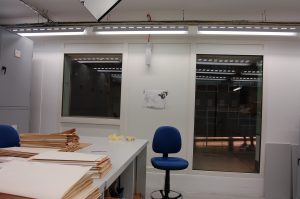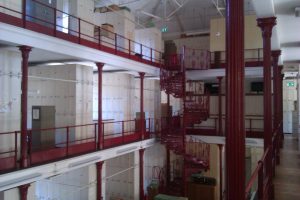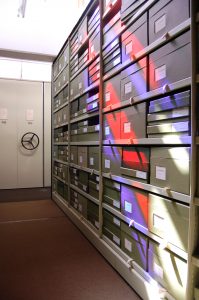I finally got round to visiting the two largest herbarium collections in the UK, The Natural History Museum London (NHM) and Royal Botanic Gardens Kew, to work on the Clematis specimens they hold from Nepal. Despite having never been to either institute and the collections being housed in in very different surrounding it all felt very familiar once I was there: the order, the structure, the comforting smell of dusty old plant specimens.
The NHM’s herbarium is in the very modern Darwin centre. White walls, modern metal compactor cupboards, climate controlled conditions and what seemed like endless cabling overhead. The building also features the ‘Cocoon’, this allows the public to literally get a glimpse into the research that goes on there. My work station for two days was right by some viewing windows. It felt very much like being an animal in a zoo enclosure with people taking pictures and children banging on the windows to get my attention. Lucky watching a grumpy man creating piles of specimens and shuffling bits of paper doesn’t hold people’s attention for very long.
Also for anyone who saw the the Channel 4 documentary “When Bjork met Attenborough” I felt a bit sorry for the NHM herbarium when the narrator proclaims “London’s Natural History Museum is home to 58 million animals and 9 million fossils. It’s the biggest natural history collection in the world.” Hang on what about the 6 million plant specimens they hold!
My second destination in London was the herbarium at Kew. They hold 7 million herbarium specimens and have representative collections from about 98% of plant genera. It is also a busy place. There were about a dozen researchers working in the basement, with a fair bit of “discussion” going on when I was there and many more folks working in the other wings. At one point there was even a camera crew filming someone talking about herbal medicine.
Kew’s herbarium is a very different beast to the modern herbarium of the NHM. The main herbarium is a beautiful example of 19th C architecture, open, light, wooden cabinets, wrought iron spiral staircases, but alas I was relegated to work in the basement. It turned out to be a blessing as it was 34°C outside in London and the basement was fine and cool.
So how does the herbarium here at Edinburgh compare? Well we have about 3 million specimens so I suppose we might be seen as the wee cousin of our bigger London relatives. Does that matter? Not really, size isn’t everything.



